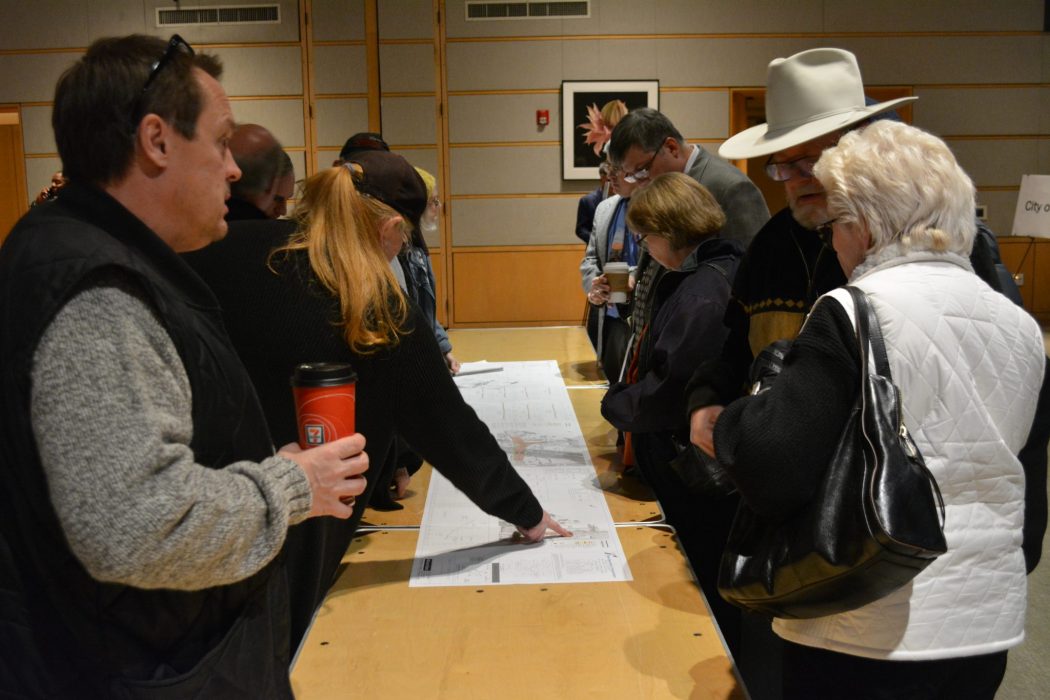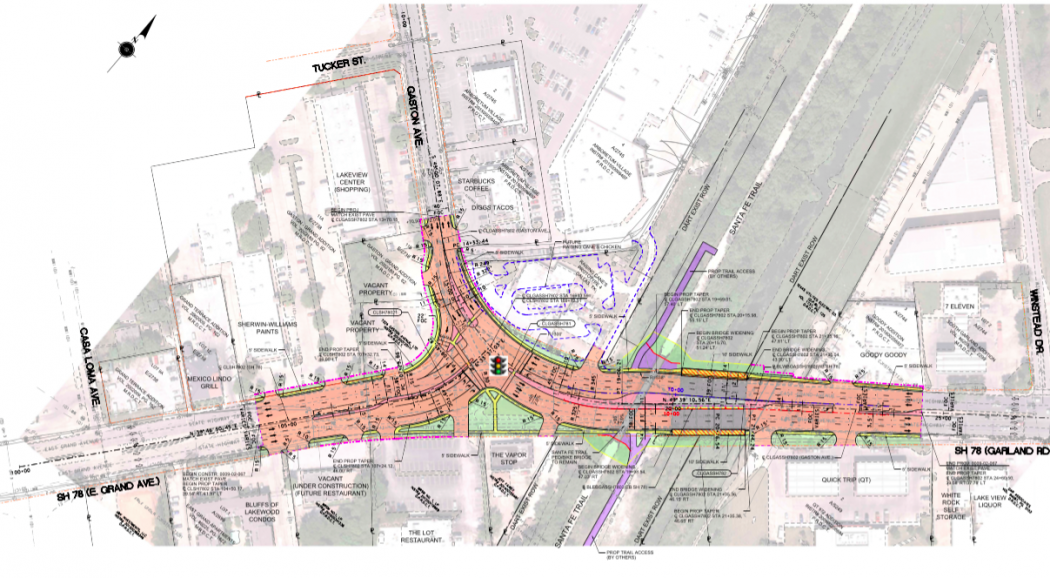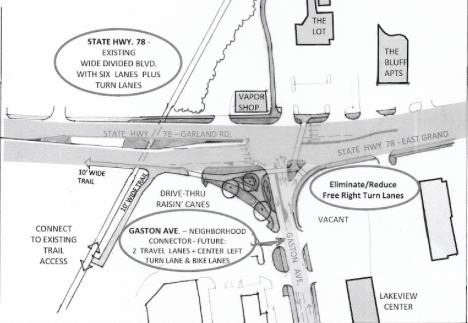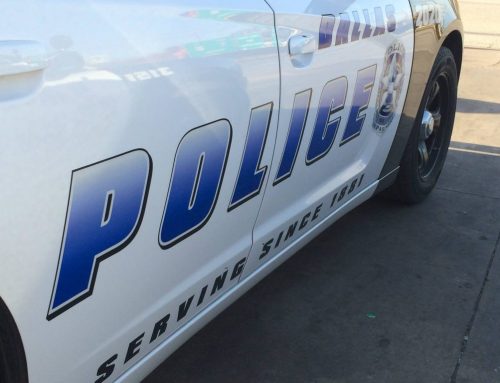
Neighbors filled the Rosine room at the Dallas Arboretum Thursday night eager for more information about the future of the Gaston-Garland-Grand intersection.
The Texas Department of Transportation (TxDOT) held the meeting to receive public input about the intersection, but representatives of the East Dallas Coalition of Neighborhoods countered the state’s design at a table outside of the room, making a case against the proceedings and the preferred plan.
Freshman Legislator of the Year Victoria Neave began the evening with an introduction, and though there were rows of chairs facing a screen, no formal presentation ensued. When crowd members realized there wouldn’t be speeches, they meandered to the back of the room to ask questions of the TxDOT staff and study the preferred plan for the intersection.
The proposed design is called a “Reverse T” intersection, which would eliminate the protected right turn from southbound Garland onto Gaston as well as the straight shot northbound from Grand to Garland. The project includes sidewalks and landscaping and allows for access to the Santa Fe Trail. “The Reverse T will maintain the existing traffic movement and volume while improving the safety within the intersection by controlling all movements with a traffic signal,” according to a TxDOT statement.

TxDOT’s preferred plan, the “Reverse T” (image courtesy of TxDOT).
But representatives of the East Dallas Coalition, which includes members from Junius Heights, Lakewood, Lakewood Heights, Swiss Avenue and other neighborhoods west of White Rock Lake, say the plan doesn’t reflect public input and is a poor use of Garland and Grand, which is state Highway 78.
Melanie Vanlandingham helped organize the coalition and wasn’t happy that there was only one option presented at the meeting. “It was an excellent opportunity to discuss the merits and pitfalls of the other plans and use them as comparisons,” she said. “We are asking them to expand that scope to include more public meetings so that it is a legitimate preferred plan.”
She believes that the “Reverse T” diverts too much of the southbound Garland traffic onto Gaston. She says that 70 percent of southbound traffic turns right onto Gaston, which allows commuters to get to Lakewood, Lower Greenville and Old East Dallas, and that the new plan would not change that behavior, threatening the walkability and safety of East Dallas neighborhoods.
A handout from the coalition says the preferred design “perpetuates existing intersection configuration, with high traffic speeds, complicated flow, high traffic flow onto Gaston and long crosswalk distances.” The group prefers a “T” intersection that straightens out Grand/Garland and has a single right turn lane onto Gaston from southbound Garland, forcing traffic down Grand and toward I-30.

East Dallas Coalition of Neighborhood’s “T” design
The coalition started a petition asking several city council members and state representatives to “stop excessive traffic from being funneled into Lakewood.”
TxDOT representatives started meeting with stakeholders, homeowner associations and property owners in May of 2016 and say they used engineering staff and other technical experts to determine the design. “We are early in public involvement and have had more than standard outreach for a project of this magnitude,” they say.
But Vanlandingham questions the legitimacy of the public involvement. “It’s not just about the car,” she says. “It’s about the community as well.”





